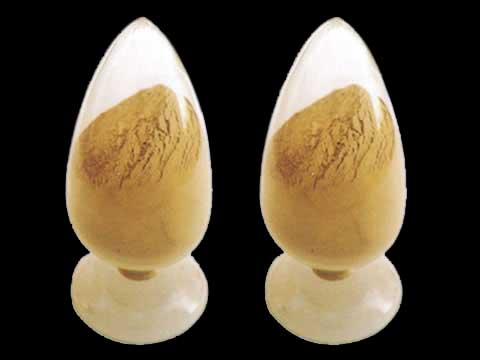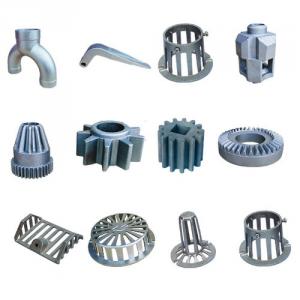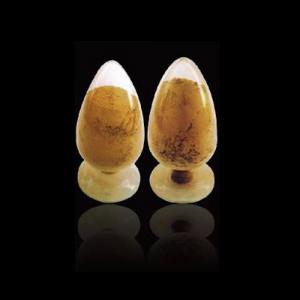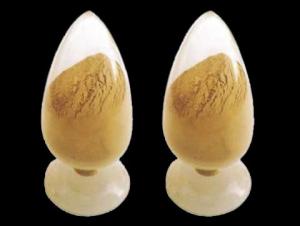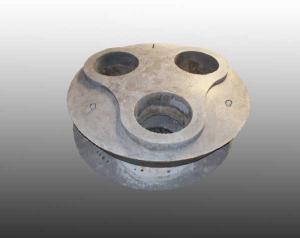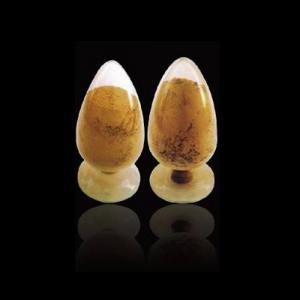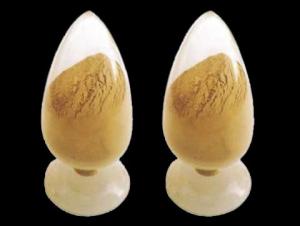Castable for Iron and Steel
- Loading Port:
- China Main Port
- Payment Terms:
- TT OR LC
- Min Order Qty:
- -
- Supply Capability:
- -
OKorder Service Pledge
OKorder Financial Service
You Might Also Like
General Information
CMAX Monolithic Refractories for Blast Furnace including Al2O3- SiO2-C castable for blast furnace tapping channel, alumina-spinel castable for ladle and high-alumina plastic castable. Made as per international standards, our product is known for its excellent corrosion and scouring resistance of iron steel, long operating life and easy execution and mending. Further, these can be provided in different specifications as required by the clients.
Feature
Excellent corrosion and scouring resistance of iron steel
Long operating life
Easy execution and mending
Application
Main ditch of molten iron line
Main ditch of slag line
Iron trough
Slag trough
Linings of ladle (Vibration casting method construction
Linings of heating furnace of steel rolling, incinerator (Ramming construction method)
- Q: What are the common failure modes of monolithic refractories in iron and steel applications?
- The common failure modes of monolithic refractories in iron and steel applications include thermal spalling, erosion, chemical attack, and mechanical damage. Thermal spalling occurs when the refractories cannot withstand the extreme temperature changes, leading to cracking and flaking. Erosion occurs due to the abrasive nature of molten metal or slag, causing the refractory material to wear away. Chemical attack happens when the refractory reacts with the corrosive components of the molten metal or slag, leading to degradation. Mechanical damage can occur from mechanical stress, such as thermal expansion or contraction, causing cracks or fractures in the refractory material.
- Q: How do monolithic refractories withstand the corrosive environments in steelmaking processes?
- Monolithic refractories withstand corrosive environments in steelmaking processes due to their high chemical resistance and thermal stability. These refractories are made from a single, continuous material, eliminating joints and weak points that can be susceptible to corrosion. They are composed of materials such as high-alumina, silica, or magnesia, which possess excellent resistance to chemical attacks from molten metals, slags, and gases present in steelmaking. Additionally, monolithic refractories can be designed with specific additives and binders to further enhance their resistance to corrosion, ensuring their durability and prolonged service life in the harsh conditions of steelmaking processes.
- Q: How do monolithic refractories contribute to the overall efficiency of ladle refining processes?
- Monolithic refractories play a crucial role in enhancing the overall efficiency of ladle refining processes. Ladle refining is a critical step in steelmaking, where impurities are removed and alloying elements are added to achieve the desired steel properties. Monolithic refractories, which are unshaped refractory materials, offer several benefits that contribute to the efficiency of this process. Firstly, monolithic refractories provide excellent thermal insulation. Ladle refining processes involve high temperatures, and the refractories' ability to withstand and contain these temperatures is vital. Monolithic refractories have low thermal conductivity, which minimizes heat loss from the ladle. This insulation helps maintain the desired temperature within the ladle, allowing for efficient refining and reducing the energy required for heating. Secondly, monolithic refractories have high resistance to chemical attack and erosion. During ladle refining, the steel is exposed to various chemical reactions and corrosive elements. Monolithic refractories are designed to withstand these harsh conditions, protecting the ladle from chemical attack and erosion. This resistance ensures that the refractories maintain their structural integrity, preventing any contamination of the steel and extending the lifespan of the ladle. Moreover, monolithic refractories offer easy installation and repair. Unlike traditional brick refractories, monolithic refractories can be applied as a single, homogeneous layer, eliminating the need for complex bricklaying techniques. This ease of installation reduces downtime during ladle maintenance and repair, improving the overall efficiency of the refining process. Additionally, monolithic refractories can be easily patched or repaired as needed, further reducing downtime and ensuring continuous operation. In conclusion, monolithic refractories contribute significantly to the overall efficiency of ladle refining processes. Their exceptional thermal insulation properties, resistance to chemical attack and erosion, and ease of installation and repair all play a vital role in enhancing the efficiency and productivity of ladle refining. By providing a reliable and durable lining for the ladle, monolithic refractories help maintain the desired temperature, prevent contamination, and minimize downtime, ultimately improving the quality and yield of the refined steel.
- Q: What are the common failure mechanisms of monolithic refractories in the iron and steel industry?
- Common failure mechanisms of monolithic refractories in the iron and steel industry include: 1. Thermal spalling: Monolithic refractories are exposed to extreme temperature changes during the iron and steel production process. These rapid temperature fluctuations can cause the refractory material to expand and contract, leading to thermal stress and ultimately spalling. This failure mechanism is particularly common in areas where the refractory is exposed to high temperatures, such as in the hot face of a furnace. 2. Chemical attack: The iron and steel production process involves the use of various chemicals and molten metal, which can react with the refractory material over time. Chemical attack can cause the refractory to deteriorate, leading to cracks, erosion, and ultimately failure. Common culprits include slag, alkalis, sulfur, and other impurities present in the production environment. 3. Abrasion: The movement of materials, such as iron ore, coke, and fluxes, can cause abrasion on the refractory lining. This mechanical wear and tear can weaken the refractory material, leading to its failure. Abrasion is particularly prevalent in areas that experience high material flow rates or turbulence, such as in the taphole or launder systems. 4. Corrosion: Monolithic refractories can be subjected to corrosion from the gases, liquids, and solids present in the iron and steel production environment. Corrosion can occur due to the presence of oxygen, water vapor, and various chemical species, such as carbon monoxide and sulfur compounds. It can lead to the formation of corrosive products, such as oxides or sulfides, which degrade the refractory material over time. 5. Mechanical stress: Monolithic refractories may experience mechanical stress due to factors like thermal expansion and contraction, vibration, or mechanical impact. Excessive mechanical stress can cause cracks or fractures in the refractory lining, compromising its integrity and leading to failure. To mitigate these failure mechanisms, proper selection of refractory materials, regular inspection, and maintenance are crucial. Additionally, designing refractory linings considering the specific operational conditions and using appropriate installation techniques can help enhance their performance and lifespan in the iron and steel industry.
- Q: What are the specific requirements of monolithic refractories for blast furnace applications?
- To withstand the harsh conditions and high temperatures within a blast furnace, monolithic refractories used in these applications have specific requirements. These requirements encompass thermal stability, high strength, chemical resistance, erosion and abrasion resistance, low porosity, dense structure, and easy installation. Firstly, monolithic refractories must possess excellent thermal stability to endure the extreme temperatures encountered in blast furnaces. They should be able to resist thermal shock and maintain their physical and chemical properties even at high temperatures. Secondly, blast furnace conditions subject refractory linings to significant pressure and mechanical stress. As a result, monolithic refractories need to possess high strength and resistance to mechanical wear in order to withstand the weight of the burden and the movement of materials inside the furnace. Furthermore, blast furnace environments are highly corrosive due to the presence of molten metals, slag, and gases. Therefore, monolithic refractories should exhibit exceptional chemical resistance to prevent chemical reactions with these substances, which could lead to refractory degradation. Additionally, the materials being processed in a blast furnace can cause erosion and abrasion, resulting in wear of the refractory lining. Monolithic refractories used in blast furnaces should be able to withstand these erosive and abrasive forces, ensuring a longer service life. Moreover, blast furnace refractories should have low porosity to minimize the penetration of molten materials and gases. This is crucial as their penetration can cause refractory spalling and damage. Additionally, low porosity helps maintain the refractory lining's thermal stability and overall performance. Furthermore, the refractory lining in a blast furnace should have a dense structure to prevent the penetration of molten slag and metal, which could lead to refractory failure. A dense structure also aids in the refractory's heat insulation properties. Lastly, blast furnace refractories need to be easily installed and repaired due to frequent maintenance and repair requirements. Monolithic refractories offer the advantage of easy installation as they can be cast, gunned, or sprayed onto the refractory surface. This allows for quick repairs and reduced downtime. Overall, meeting these specific requirements ensures the durability and efficiency of the refractory lining, ultimately leading to improved blast furnace performance.
- Q: How do monolithic refractories withstand high temperatures and thermal shocks?
- Monolithic refractories are able to withstand high temperatures and thermal shocks due to their unique composition and design. These refractories are made from a single piece or structure, hence the term "monolithic". This structural integrity allows them to resist the extreme heat and sudden temperature changes experienced in high-temperature applications. One key factor that enables monolithic refractories to withstand high temperatures is the use of high-quality raw materials. These materials are carefully selected for their ability to withstand heat and thermal stress. Common components include silica, alumina, magnesia, and other refractory minerals with high melting points. Additionally, the manufacturing process plays a crucial role in enhancing the thermal resistance of monolithic refractories. The raw materials are mixed with binders, such as clay or cement, to form a homogenous mixture. This mixture is then shaped and installed in its final position, either by pouring or gunning, depending on the application. The binder ensures that the refractory maintains its shape and integrity during thermal cycling. Furthermore, monolithic refractories possess excellent thermal conductivity and low thermal expansion properties. This means that they can efficiently transfer and dissipate heat, minimizing the risk of thermal stress and cracking. The low thermal expansion also reduces the likelihood of spalling or delamination, which is crucial for withstanding thermal shocks. Another factor contributing to the high-temperature resistance of monolithic refractories is their ability to form a protective layer or slag at the surface. This layer acts as a barrier, preventing the refractory from direct contact with corrosive materials or aggressive atmospheres. It helps to improve the refractory's longevity and resistance to thermal shocks. Overall, the combination of high-quality raw materials, careful manufacturing techniques, and beneficial thermal properties enables monolithic refractories to withstand high temperatures and thermal shocks. These refractories are widely used in various industries, including steel, cement, glass, and petrochemical, where they serve as reliable linings in furnaces, kilns, and other high-temperature equipment.
- Q: Can monolithic refractories be used for the lining of ladle refining furnaces and VOD converters?
- Yes, monolithic refractories can be used for the lining of ladle refining furnaces and VOD converters. Monolithic refractories are versatile and can be shaped and installed easily, making them suitable for lining various types of furnaces and converters, including ladle refining furnaces and VOD converters.
- Q: How do monolithic refractories enhance the performance of ladle and tundish purging systems?
- Monolithic refractories enhance the performance of ladle and tundish purging systems by providing high thermal insulation, excellent erosion resistance, and increased durability. These refractories help maintain the desired temperature in the ladle and tundish, ensuring optimal conditions for purging operations. Additionally, their erosion resistance properties prevent excessive wear and tear, extending the lifespan of the purging systems. Overall, monolithic refractories play a crucial role in enhancing the efficiency and effectiveness of ladle and tundish purging systems.
- Q: How do monolithic refractories improve energy efficiency in the iron and steel industry?
- Various mechanisms are employed by monolithic refractories to enhance energy efficiency in the iron and steel industry. To begin with, these refractories possess exceptional insulation properties that effectively minimize heat loss during production. This results in a higher retention of heat within the furnace, thereby increasing energy efficiency. Furthermore, monolithic refractories exhibit low thermal conductivity, facilitating improved heat transfer within the furnace. This allows for efficient distribution of the heat generated during production, enabling optimal temperature control and reducing energy wastage. Additionally, monolithic refractories demonstrate high resistance to thermal shock and corrosion, which are common challenges faced in the iron and steel industry. By enduring extreme temperatures and chemical reactions, these refractories prevent premature wear and tear, consequently reducing the need for frequent repairs and replacements. This not only conserves energy but also minimizes downtime, leading to enhanced productivity and energy efficiency. Moreover, the utilization of monolithic refractories enables better furnace design and optimization. Their flexibility permits the creation of bespoke shapes and linings that cater to specific furnace requirements, resulting in improved heat transfer and combustion efficiency. This customized approach promotes energy savings by maximizing fuel utilization and reducing emissions. Lastly, monolithic refractories possess a longer lifespan compared to conventional brick refractories. This prolonged durability reduces the frequency of refractory replacements, subsequently lowering the energy consumption associated with the manufacturing and installation of new refractories. Overall, monolithic refractories play a significant role in enhancing energy efficiency in the iron and steel industry by reducing heat loss, improving heat transfer, withstanding thermal shock and corrosion, enabling better furnace design, and increasing refractory lifespan. Their usage not only saves energy but also enhances productivity and sustainability within the industry.
- Q: What are the key properties of pumpable refractories used for monolithic refractory applications?
- The key properties of pumpable refractories used for monolithic refractory applications include high flowability, good workability, excellent bonding strength, and high resistance to thermal shock. These pumpable refractories should also possess good pumpability and be able to withstand the intense heat and mechanical stress in the application environment. Additionally, they should have low water demand, high chemical resistance, and the ability to maintain their properties even after exposure to high temperatures.
Send your message to us
Castable for Iron and Steel
- Loading Port:
- China Main Port
- Payment Terms:
- TT OR LC
- Min Order Qty:
- -
- Supply Capability:
- -
OKorder Service Pledge
OKorder Financial Service
Similar products
Hot products
Hot Searches
Related keywords

